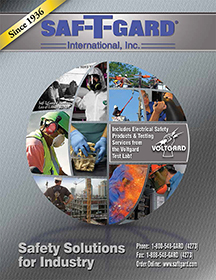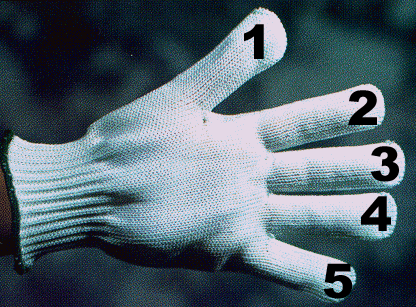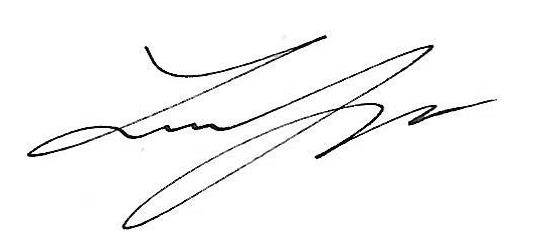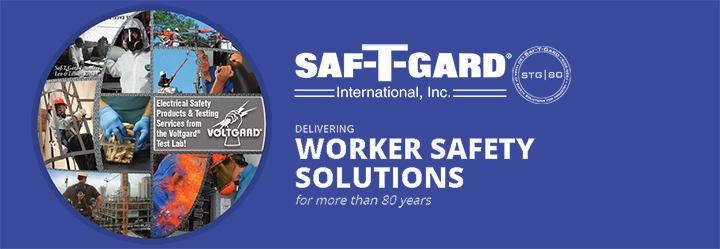| |

|
Please Vote for the
Saf-T-Gard Products Nominated in the ISHN 2020 Readers' Choice Awards |
| |

|
| |
Voting is now open for the ISHN 2020 Readers' Choice Awards.
Please help Saf-T-Gard’s products gain the recognition they deserve as today's
most innovative PPE and safety products in the industry by clicking here and voting for the
following three Saf-T-Gard products entered:
- Saf-T-Gard® Versa-Gard® Flex G2 & G4 Cut-Resistant Gloves Made with GorillaYarn® (Hand Protection - Cut-resistant Category)
- Saf-T-Gard® Voltgard® V-GRIPS® Leather Protector Gloves (Hand Protection - Electrical Category)
- Saf-T-Gard® Voltgard® RESCUE-8T Telescopic Insulated Rescue Body Hook (Emergency Response - First Aid Category)
Winning products will receive recognition, an award and will be the subject of ISHN’s Innovation Winners 2020 Podcast. Winners will also be
featured in the upcoming August 2020 publication of ISHN Magazine.
Unfortunately, ISHN does not have unique links for each
individual Saf-T-Gard product voting page, so please click here for directions on how to vote in PDF format.
Everyone can vote for each Saf-T-Gard product entered once a
day, every day, from now until when the voting closes at 11:59 PM EST May 31,
2020. We encourage everyone to vote for our products every day to increase our
chances of winning.
As an added incentive, ISHN will randomly select one voter each
week to win a $50.00 gift card. Once you have completed voting, you will have
the option to fill out a simple form to be entered in the drawing. Make sure
you enter a valid email address so that ISHN can find you. Again, we are
strongly encouraging you to vote for each of the above Saf-T-Gard products once
per day to increase your chances of winning too! Click here to vote.
Please feel free to share this with your co-workers, friends and
family as anyone and everyone can vote.
Thank you very much for your participation, and please contact
customer service at 1-800-548-GARD
(4273) today for more information.
|
| |
|
|
|

|
OSHA Allowing All Employers to Suspend Annual Respirator Fit Testing |
| |

|
| |
OSHA is extending its temporary leniency on annual respirator
fit testing to all covered employers, not only those in the health care
industry.
OSHA issued a memo March 14, 2020, stating
the agency is allowing health care employers to suspend annual fit testing, in
large part, to contend with a nationwide shortage of N95 filtering facepiece
respirators. However, according to an April 8, 2020 press release, the agency is directing its field offices to exercise “enforcement discretion” on its annual fit testing requirements - 1910.134(f)(2) to all employers amid the COVID-19 pandemic if
employers exercise the following precautions:
- Make good-faith efforts to comply with
regulations
- Use only NIOSH-certified respirators
- Perform initial fit tests for each of their
health care providers with the same model, style and size of respirator that
the worker will need to protect against COVID-19 - “Initial fit testing is
essential to determine if the respirator properly fits the worker and is
capable of providing the expected level of protection”
- Explain to workers the importance of
performing a seal check (i.e., a fit check) each time they put on a respirator
to ensure the respirator is providing an adequate seal, in accordance with
1910.134, Appendix B-1
- Conduct a fit test when observing visible
changes in an employee’s physical condition, such as facial scarring, dental
changes or changes in body weight - “Explain to workers that, if their face
shape has changed since their last fit test, they may no longer be getting a
good facial seal with the respirator and, thus, are not being adequately
protected”
- Remind workers they should inform their
supervisors or respirator program administrators if the integrity or fit of
their N95 respirator is compromised
- Implement strategies from OSHA and the
Centers for Disease Control and Prevention for optimizing the supply of N95
filtering facepiece respirators and prioritizing their use
OSHA issued two memos April 3, 2020, to
try to help with the N95 shortage. One allowed for the reuse of N95 respirators
and the use of expired N95s in certain cases. The other allowed for the use of
filtering facepiece respirators and air-purifying elastomeric respirators
certified by other countries or jurisdictions.
Click here to read more
suggestions from the agency about how to handle the N95 shortage and the
shortage of fit-testing kits and solutions.
|
|
|
|
| |

|
The Different Types of Seam Constructions for Protective Apparel
|
| |

|
| |
When evaluating protective apparel for specific risks and hazards,
seam type is a critical element to consider, in addition to fabric and design.
Seams can help provide garment strength, durability, and hazard protection.
However, seams can potentially be a weak barrier location on the garment; one
loose thread or gap and the barrier between you and your environment unravels,
leaving you potentially vulnerable.
There are five main types of seam construction for DuPont™ Personal
Protection industrial protective apparel:
- Serged (Sewn) - A
seam is produced when threads are interlocked around the edges of two pieces of
fabric
- Bound - An
outer binding is added to a tightly sewn seam to increase seam strength and
improve seam barrier
- Welded - A
seam is created by fusing two pieces of material ultrasonically or thermally
- Taped - A
strip of compatible material is applied over a sewn seam, which increases
strength and improves barrier protection against heavy liquid splash
- Double Taped - A
strip of compatible material is applied on both the inside and outside surface
of a sewn seam
Taped and double taped seams provide the highest levels of
protection. During high-contact activities, especially cleaning,
disinfecting, and decontaminating, where exposure to moderate to large volumes
of bodily fluids is anticipated, a taped seam DuPont™ garment may be appropriate
to reduce the risk of bodily fluid contact. A hazard assessment should be performed to determine the complete personal protective equipment (PPE)
ensemble for hazardous tasks.
Saf-T-Gard carries a comprehensive line of DuPont™ industrial
protective apparel in several different fabrics, including coveralls, pants,
shirts, aprons, sleeves, lab coats and hazmat suits. Click here
to shop them online, or call customer service at 1-800-548-GARD (4273) today
for more information or to place an order.
|
| |
|
| |

|
Saf-T-Gard®
Reflect-A-Gard® RG-2005 Vests Deliver Visible Safety and Savings
|
| |

|
| |
Save as much as 68% on Saf-T-Gard® Reflect-A-Gard® RG-2005 Class 2 Hi-Viz Breakaway Safety Vests now through May 31, 2020. Saf-T-Gard can help keep you seen and safe on the job in the Reflect-A-Gard® RG-2005 Class 2 Hi-Viz Breakaway Safety Vests with features and benefits that include the following:
- Fluorescent lime polyester mesh fabric offers high visibility and breathable comfort
- Two (2) horizontal and two (2) vertical 2” reflective stripes deliver ANSI/ISEA-107 Class 2 Level 2 compliance
- The vest is designed to separate harmlessly from the body in the event that it gets caught
- The five (5) breakaway points include two (2) on the shoulders, two (2) on the sides and one (1) in the center
- One (1) inner pocket at left chest for convenient storage and transportation of work materials
- Hook-and-loop closure provides easy on/off and comfortable, secure fitting
- Available in sizes Large-5XL
- Sold individually or 50 each/case by size
- $3.25/each or $112.50/case of 50 each by size ($50 minimum order)
- Save 31% more per vest when you order by the case
Click here to shop the RG-2005 Vests online, or call customer service at 1-800-548-GARD (4273) today for more information or to place an order.
|
| |
|
|
|

|
How to Care for Fall Protection Harnesses |
| |

|
| |
Just as work garments, harnesses can get dirty. Cleaning your
fall protection equipment will prolong its life and contribute towards
maintaining the performance of the product. Here are some useful tips on how to
do it safely.
Spot cleaning
Use a damp sponge or cloth along with a mild detergent if you need to spot clean any Miller brand harnesses,
personal fall limiters, self-retracting lifelines and webbing lanyards.
Manual washing
- Place products to be cleaned in mesh laundry bags to reduce the
chances of abrasion, snagging and entanglement that could cause damage to
stitching or labels
- Use a mild
soap or detergent that does not include bleach
- Make sure the solution is not too soapy, as too much soap can
make the product feel tacky to the touch
- Never use an acid solvent, or any solvent-based product on the
harness, as it could ruin the material and affect the integrity of the product,
making it unsafe to use
- To begin cleaning the harness, wipe off any loose particles with
a cloth
- Once the loose particles are removed, take the cleaning solution
and place it on a non-abrasive sponge and work it into the material using back
and forth motion, rigorously creating a lather
- After scrubbing the harness with the solution, make sure to thoroughly
rinse the solution from the fabric using plain water,
as soaking it can damage the material
- After rinsing, blot the extra moisture away using a lint-free
cloth
- Let the harness hang without folds in the material and air dry in
an environment where there isn't excessive heat, away from direct sunlight
- Remove items from mesh bags and hang freely to dry (do not machine dry) but away from
excessive heat, steam, or long periods of direct sunlight
- Use the harness after it is fully dried
- Do not store the equipment wet
- Inspect products thoroughly before returning to service
Machine washing advice
Machine washing may cause fading and softening of the webbing
and may reduce the useful service life of the product. Be sure to inspect your
washed products thoroughly before each use and be sure to always follow
instructions in the instruction manual(s). On a final note, it
is recommended that each employee be provided their own set of personal protective
equipment instead of sharing PPE.
Saf-T-Gard carries a wide selection of Honeywell Miller fall
protection products, including harnesses, lanyards, SRLs, anchorage points and
fall protection accessories. Click here to shop them online, or
call customer service at 1-800-548-GARD
(4273) today for more information or to place an order.
|
| |
|
|
|

|
Watch the FREE "Electrical Safety in the Workplace" Webinar Now ON DEMAND |
| |

|
| |
Two to four Americans working with electricity will be injured
while we are on this webinar today. They will all be shocked…likely temporarily
or permanently blinded, possibly set on fire and maybe even killed. With more injuries than ever, we need to do more. Ensuring that
the right process, the right tools, and the right person is associated at each
electrical device...EVERY TIME. Join John Welch, CEO of Bowtie Engineering, as he discusses the
following topics:
- Protection agencies - OSHA vs. NFPA
- What does OSHA say?
- What does NFPA 70E say?
- Getting safety programs started
- Yes, it's complicated - Getting your arms around this complex
subject or task of electrical safety
What makes Bowtie Engineering different is their ability to
standardize nationally and their ability to calculate these risks, train these
workers and perform breaker maintenance to steer the worker into a 40 cal/cm2
hooded suit or basic safety glasses that will protect them from these hazards. Bowtie Engineering's uniqueness is BowVue; a software portal that organizes this complexity worldwide, for businesses and the people working near electricity. Moreover, they ensure that the right process, the right tools and the right
person is associated at each electrical device. Click here to watch this FREE webinar ON DEMAND today to learn more!
|
|
|
|
|
Saf-T-Gard Catalog
|
|

|
|
|
The time for better safety is now!
Click here to request a FREE copy of our current full-line Saf-T-Gard International, Inc. catalog today, and learn how to better GARD yourself with Saf-T-Gard.
Featuring more than 3,900 different line items from more than 100 different brands and 14 different product categories, this catalog is an excellent resource and provides a wealth of information to help keep you safe and productive for even the most rigorous applications!
|
|
| |
|

|
|
| Closeout Corner - Don't Miss These Great Deals |
|

|
|
|
Saf-T-Gard is making it easier than ever to save big on your favorite safety items with the "Closeout Corner" featured monthly in the Saf-T-Gardian e-Newsletter.
Click here to view the reduced pricing on all of your must-have items to take advantage of this limited-time pricing and inventory.
Be sure to check back next month for even more products and savings!
|
|
| |
|

|
|
Counterfeit Respirators/ Misrepresentation of NIOSH-Approval
|
|

|
|
|
Counterfeit respirators are products that are falsely marketed
and sold as being NIOSH-approved and may not be capable of providing
appropriate respiratory protection to workers.
When NIOSH becomes aware of
counterfeit respirators or those misrepresenting NIOSH approval on the market, NIOSH will post them to alert users, purchasers, and manufacturers.
How to identify a NIOSH-approved
respirator:
NIOSH-approved respirators have an approval label on or within
the packaging of the respirator (i.e. on the box itself and/or within the
users’ instructions). Additionally, an abbreviated approval is on the FFR
itself.
You can verify the approval number on the NIOSH Certified Equipment List (CEL) or
the NIOSH Trusted-Source page
to determine if the respirator has been approved by NIOSH. NIOSH-approved FFRs
will always have one the following designations: N95, N99, N100, R95, R99,
R100, P95, P99, P100.
Signs that a respirator may be
counterfeit:
- No markings at all on the filtering facepiece respirator
- No approval (TC) number on filtering facepiece respirator or
headband
- No NIOSH markings
- NIOSH spelled incorrectly
- Presence of decorative fabric or other decorative add-ons (e.g.,
sequins)
- Claims for the of approval for children (NIOSH does not approve
any type of respiratory protection for children)
- Filtering facepiece respirator has ear loops instead of
headbands
When
in doubt, click here to access a complete list
NIOSH-approved N95 particulate filtering facepiece respirator manufacturers
from the CDC.
|
|
| |
|
| Safety Tips |
|

|
|
|
1. SPRING CLEANING - Clean out that first aid kit and
restock it with fresh supplies
2. SPRING CLEANING - Many cleaning solvents and
agents contain hazardous chemicals, so use respiratory protection as indicated
on the MSDS
3. SPRING CLEANING - Times change, jobs change, applications change and hazards change; so clean out those old Job Hazard
Analysis reports and prepare new ones that reflect today's reality
4. SPRING CLEANING - Be sure to use industrial eye
protection and hearing protection when cleaning up outdoors with power-assisted
equipment
5. SPRING CLEANING - Use lens cleaning tissues and
sprays to clean protective eyewear or buy new protective eyewear as needed
|
|
| |
|
| Q&A |

|
|

|
|
|
Question - In a situation where employees who wear prescription glasses wear a
larger bulkier type of safety glasses over their prescription glasses, what
liability does the employer have from an OSHA standpoint if an employee
intentionally refuses to wear safety glasses?
Answer - Under §1910.133(a)(3), Eye and Face Protection, the employer must
ensure that each affected employee who wears prescription lenses while engaged
in operations that involve eye hazards wears eye protection that incorporates
the prescription in its design, or wears eye protection that can be worn over
the prescription lenses without disturbing the proper position of the
prescription lenses or the protective lenses.
|
|
| |
|
| Saf-T-Gard Spotlight |
|

|
|
|
Larry Wolf is our Chief Financial Officer, and he joined the company in October 2017.
What Larry likes about Saf-T-Gard:
"I like the professional environment, multi-generational family ownership,
free-flowing communication between the management team and the calm and consistent
leadership."
What makes Larry’s day:
"Getting home and seeing my wife and kids."
Larry’s outside interests:
"Mainly reading, but i also enjoy sports when there is time (Bears, Blackhawks,
Cubs)."
Anything else?
"I am excited to be a member of the Saf-T-Gard team!”
|
|
| |
|
 Factoid Factoid |
|

|
|
|
An employee is to perform work inside an electrical panel. The
electrical disconnect is open and has been properly locked out. The electrical
circuitry below the disconnect has been confirmed to be in a zero energy state
by a qualified person using test equipment. Does the employee need to wear full
flame-resistant (FR) clothing, head and face protection and rubber insulating
gloves when working on a panel that has been completely de-energized, either
disconnecting and locking out the panel itself or by disconnecting and locking
out a panel upstream from the panel where the work is being performed?
No. If there are no exposed energized electrical components
after a person has locked and tagged out the disconnect, and verified
de-energization, per the requirements of §1910.333(b)(2), then there would be
no potential for electric shock or arc flash. The protective equipment
mentioned would not be required.
This answer pertains only to exposure to
de-energized parts and not to employee exposure to any circuit parts that have
not been de-energized.
However, personal protective equipment may be required
by another condition independent of electrical hazards. For example, if an
employee is working in the panel box and using a drill or saw that is creating
flying particles, or if the employee is using a chemical that presents a splash
hazard to the eyes, then the eye and/or face protection may be required.
|
|
| |
|
| As I See It |
|

|
|
|
It is April 2020. COVID-19 still dominates the news.
With the numbers of COVID-19 cases and unfortunate fatalities so high, many or
most of us could know someone affected and infected.
We’re all in this
together, so we should all be in each other’s thoughts. And consider taking a
moment to express appreciation and gratitude for the front line in this battle
– the health care workers and first responders.
If you’re reading this at work,
then you probably either work for a company or organization deemed “essential”
or you work for yourself and you know that you are "essential".
According to the U.S. Department of Homeland Security and our state government, Saf-T-Gard is
also an essential industry because we fulfill an essential link to supplying
needed safety products to key markets such as electric power utilities and
contractors, food producers and retailers, and the industrial facilities that
further support our economy.
The Saf-T-Gard team including those in our
Northbrook facility and those working remotely are individually and
collectively dedicated to providing the service that you, our customers, have
come to expect.
As a young 84 year-old company, we have faced challenges
before. Born in 1936 during the Great Depression, matured during World War II,
survived countless economic ups and downs since then, Saf-T-Gard is committed
to supply our customers with needed product to keep workers safe on the job.
And we have certainly taken strong action to protect the health of our
Saf-T-Gard associates and families as well. Because we are Saf-T-Gard International - Bringing
Workers Home Safely Since 1936.
|
|
|

